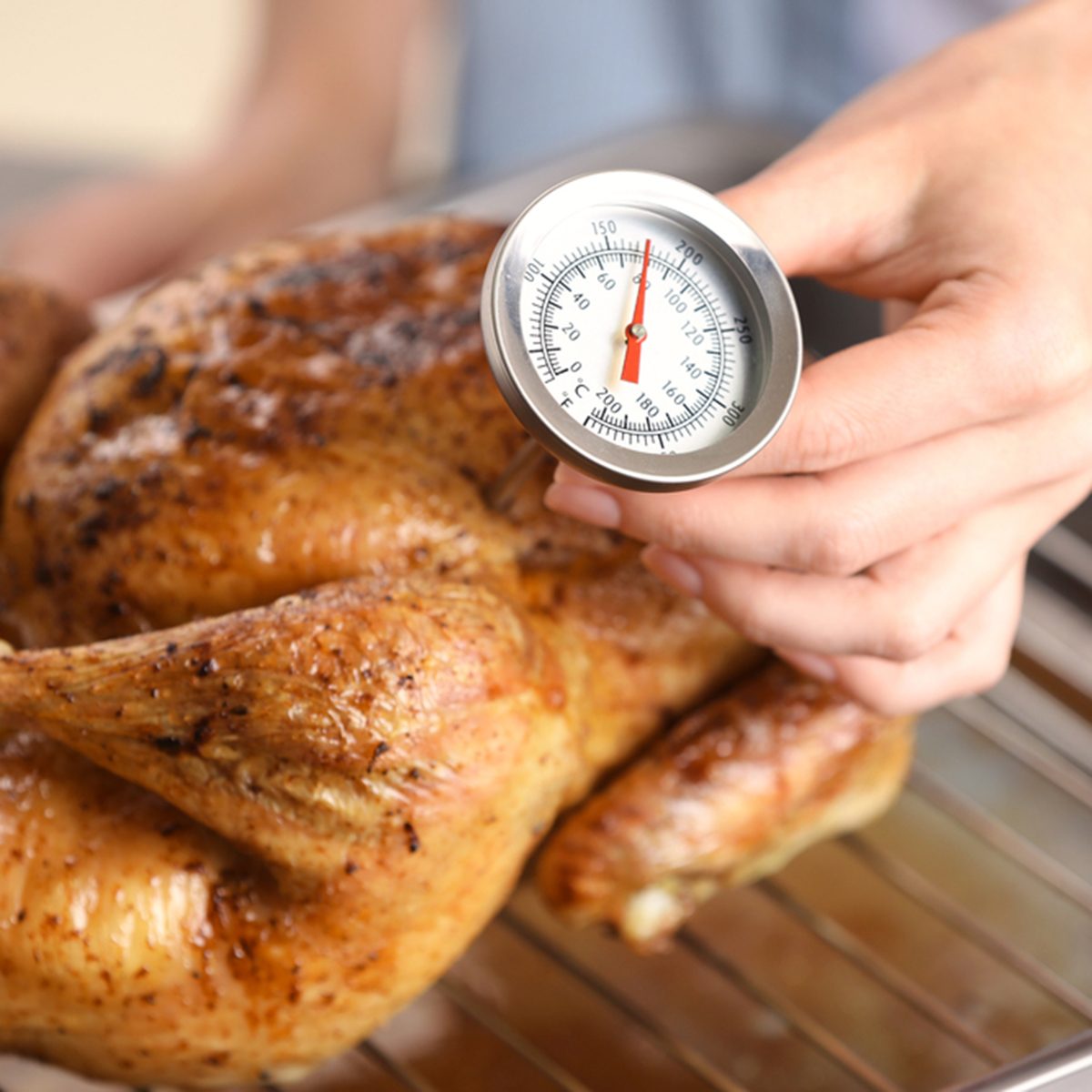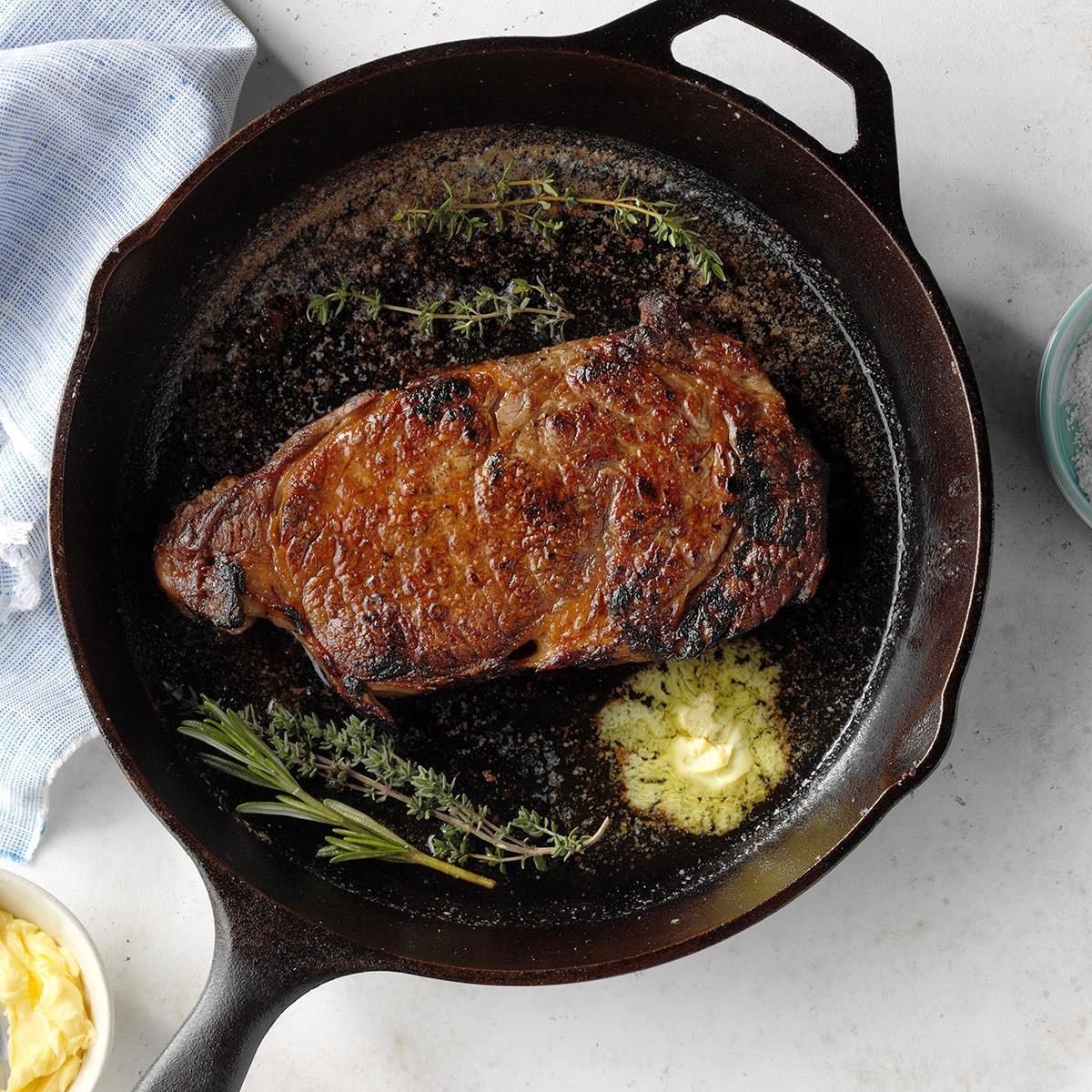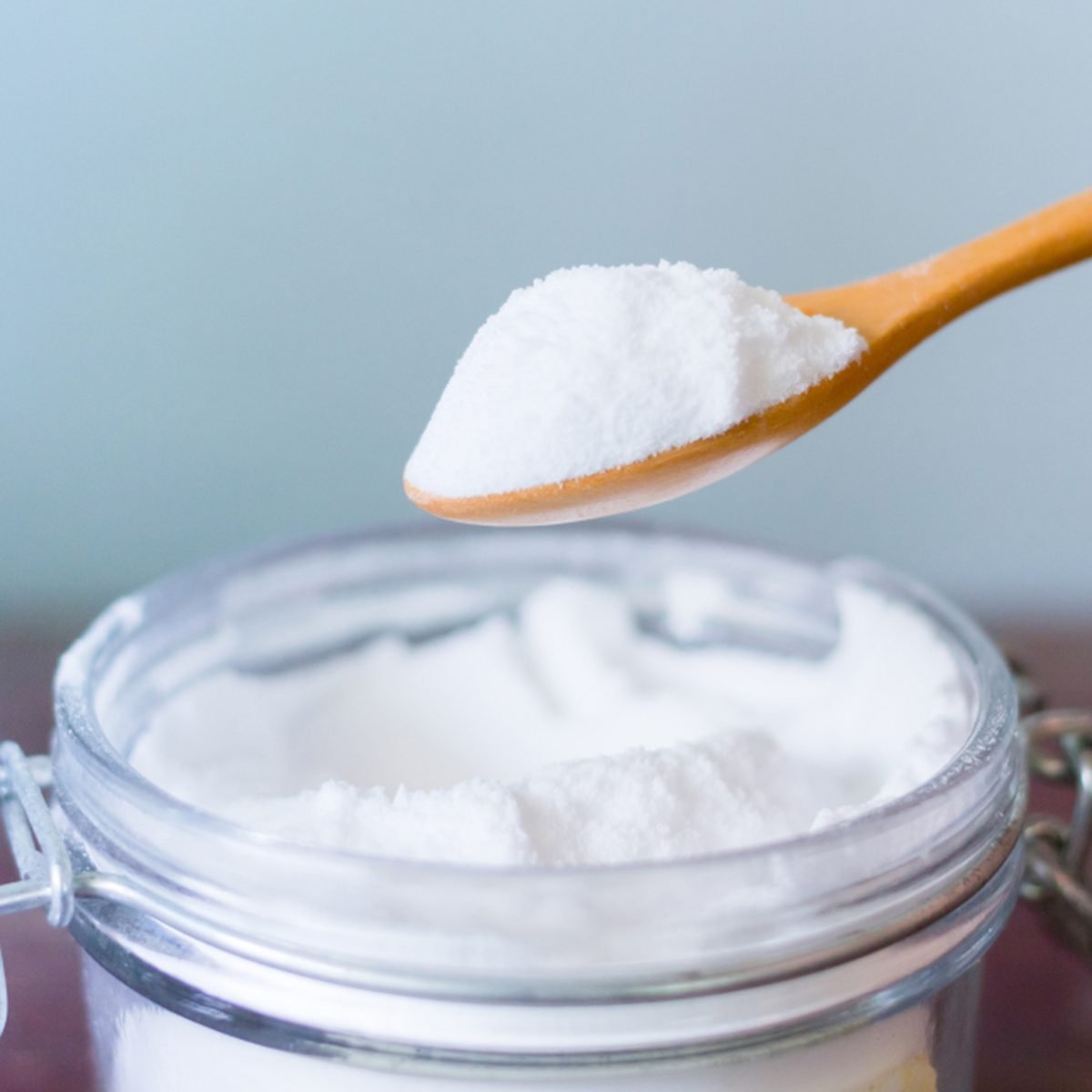
Cut against the grain
For cheaper cuts of steak, like bottom sirloin, short rib or flank steak, Heidi Larsen of Foodie Crush recommends grilling the meat until medium rare and then cutting it into thin slices rather than serving the whole slab of steak. “It makes each bite a bit smaller and more succulent,” she explains. Just be to sure cut against the grain—otherwise, you’ll be left with chewy beef. Here are 10 other common mistakes to avoid when cooking a steak.

Soak it in salt
“Brining makes everything taste better!” says Cody Hopkins, CEO and founding farmer of Grass Roots Farmers’ Cooperative, a cooperative of farmers who raise and sell organic, pasture-fed meat. Because when you soak meat in a salty solution, the salt begins to break down some of the proteins, making it easier to chew. Two rules of thumb to remember: Use one cup of salt per gallon of water and let meat brine for about one hour per pound.

Sprinkle on sugar
Don’t skimp on the sugar if you want a restaurant-quality steak without the hefty price tag. Combine brown sugar with the spices of your choosing (paprika, garlic powder, salt, etc.), then rub it generously all over the outside of the meat before cooking. It will keep some of the juices inside the meat while providing that glistening caramelized crust you love.

Use an Instant Pot
There’s a reason that people, like chef and former restaurant owner Sylvia Fountaine, are so obsessed with their Instant Pots. The compact pressure cookers produce tastier meat in half the time of a standard oven. Fountaine advises, “Just be sure to let whatever meat you are cooking have about 20 to 30 minutes to rest on warm and reabsorb some of the liquid from the pot, allowing it to get juicy and tender.” Psst…Here are 11 Instant Pot secrets you won’t find in the owner’s manual.

Check the temperature
Pay attention to the temperature of the meat. Most people don’t realize that they’re overcooking (or undercooking!) meat which makes it chewy and tough to swallow. The ideal temperature, especially for less expensive cuts which need to be cooked perfectly to taste good, is medium or about 140 degrees Fahrenheit. Check the meat frequently with a thermometer while grilling or searing.

Marinate for more flavor
Meat that’s tasty and tender? Yes, please. To prep the perfect piece, Lacey Baier of A Sweet Pea Chef says that she likes to marinate her meat for at least six hours before cooking. Choose one that has an acidic base (think: vinegar, wine or lemon juice), which will soften any tough muscular fibers in chicken and steak. Stumped for ideas? Browse 97 of our favorite BBQ ideas for summer.

Try a dairy-based rub
Don’t forget the dairy! Marinades with yogurt, butter or cream bases can work just as well as acidic ones. That’s because the active bacteria and calcium in dairy products activate enzymes in the meat that naturally softens it.

Experiment with sous vide
Meet what Hopkins calls your “secret weapon” when it comes to cooking cheaper cuts: sous vide. The trendy hands-off method involves placing your meat inside a vacuum-sealed bag, then submerging it in hot water for about an hour. The result is a super succulent steak as all of the moisture is trapped inside the bag. Find out 8 surprising things you can cook in an air fryer…and 6 you can’t.

Grill with cast iron
Take your grilling game to the next level by placing an affordable steak, like a flap or flat iron, in a cast iron skillet before placing it on the barbecue. By doing so, you’ll trap in all of the juices rather than letting them drip through the grill grates so that the steak stays melt-in-your-mouth moist. Check out what other foods you should be cooking in cast-iron.

Make a baking soda brine
Tenderize cheap ground beef by soaking it in a mixture of baking soda and water for 15 to 20 minutes (use 1 teaspoon of baking soda and 1/2 cup of water for every 12 ounces of meat). “It helps to lock in moisture and accelerate browning by raising the pH level of the meat,” explains Jennifer Segal of Once Upon A Chef.

Pound it out
To soften inexpensive cuts while also getting a good arm workout, break out the meat mallet. Not only does it flatten out the meat so that it will cook evenly but it also begins to break down some of the tough connective tissue so it will be easier to digest and can soak up any marinade better. If you don’t have a mallet, no worries—you can use a rolling pin or even the bottom of a small saucepan.

Don’t rush the cook time
Low and slow is the name of the game in Holly Storm’s kitchen. The food blogger behind Southern Mom Loves suggests putting cheaper cuts (like fatty brisket) in the oven or a crockpot at a low temperature for a long time. As the meat cooks, the collagen, which is the protein that makes it tough, begins to dissolve so your meat becomes more tender. But before you hit the kitchen, read this list of slow cooker mistakes and how to avoid them.

Toss it on the smoker
Another “low and slow” method that was basically made for tough types of meat—particularly pork shoulder or ribs—is smoking. Not only does it soften the tough proteins just like the oven and slow cooker do but it also adds that crave-worthy smokey flavor. Warning: You’ll need patience for this style as it takes about one and a half to two hours of cooking time per pound. Are you keeping these pantry items too long?
The post 13 Tricks to Get Cheap Meat to Taste Expensive appeared first on Taste of Home.
Amanda Tarlton